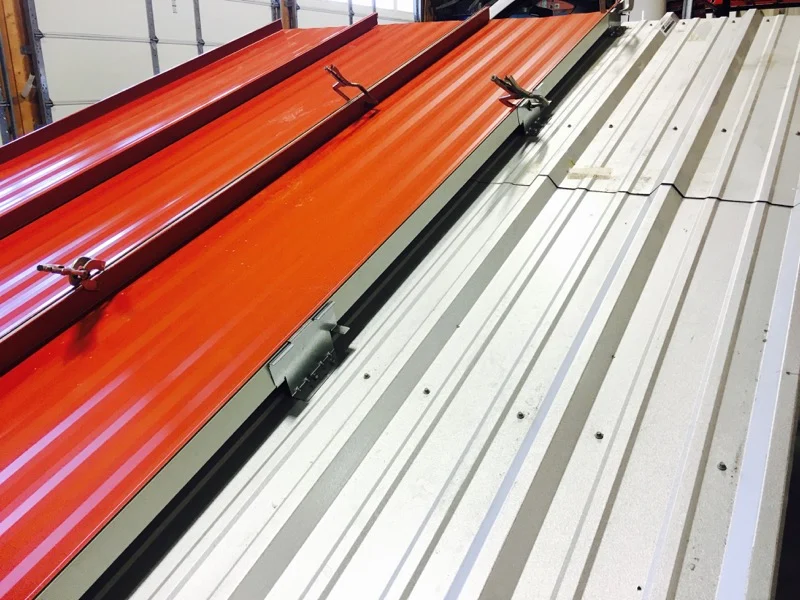Metal roofing is gaining popularity as a durable and attractive option for residential and commercial buildings. If you’re considering installing a metal roof or wondering how much overlap is required, this article will provide you with all the necessary information. Understanding the overlap requirements is crucial to ensure a leak-free and structurally sound roof. Let’s delve into the details and explore how much you need to overlap metal roofing panels.

Understanding Metal Roofing Overlap:
Metal roofing panels are typically installed in an overlapping fashion to create a watertight barrier. The overlap helps prevent water penetration and protects the underlying structure. The amount of overlap required may vary depending on several factors, including the type of metal roofing system, the slope of the roof, local weather conditions, and the specific manufacturer’s recommendations.
The Importance of Proper Overlap:
Adequate overlap is vital to maintain the integrity and functionality of a metal roof. Insufficient overlap can lead to water infiltration, which can cause damage to the roof deck, insulation, and interior of the building. It can also result in costly repairs and compromise the lifespan of the roof. Therefore, understanding the recommended overlap guidelines is crucial for a successful metal roofing installation.
Factors Affecting Overlap Requirements:
- Roof Slope: The slope or pitch of the roof plays a significant role in determining the overlap requirements. Steeper roofs require more overlap to ensure water shedding and prevent wind-driven rain from infiltrating the seams.
- Weather Conditions: Areas with high wind or heavy rainfall require increased overlap to provide enhanced protection against potential leaks. Additionally, regions prone to hurricanes or extreme weather events may have specific local building codes or regulations that dictate the minimum overlap required.
- Roofing System Type: Different metal roofing systems have varying overlap recommendations. For instance, standing seam roofs typically have a smaller overlap compared to corrugated metal roofs. It’s essential to consult the manufacturer’s guidelines to ensure compliance with the recommended overlap for your specific metal roofing system.
- Manufacturer’s Recommendations: Each metal roofing manufacturer may have its own guidelines regarding overlap. These recommendations are typically based on extensive testing and industry standards. It’s crucial to follow the manufacturer’s instructions to maintain warranty coverage and ensure the optimal performance of the roof.
Determining the Required Overlap:
To determine the required overlap for your metal roofing panels, consult the manufacturer’s documentation or contact their technical support. They can provide you with the specific overlap measurements based on your roof’s characteristics and local requirements.
In general, a typical overlap range for metal roofing panels can be between 1.5 to 3 inches. However, it’s important to remember that this is a general guideline, and the actual overlap requirement may differ based on the factors mentioned earlier.
Conclusion
: Properly overlapping metal roofing panels is essential for a leak-free and long-lasting roof. The specific overlap requirements for your project can vary depending on the roof slope, local weather conditions, and the type of metal roofing system you choose. To ensure compliance and optimal performance, always refer to the manufacturer’s recommendations and consult with roofing professionals if needed. By understanding the importance of overlap and following the guidelines, you can enjoy the benefits of a durable and aesthetically pleasing metal roof for years to come.
Remember, when installing a metal roof, it’s crucial to prioritize safety. If you’re not experienced with roofing installations, it’s recommended to seek professional assistance to ensure a successful and reliable metal roofing project.



Leave a Reply